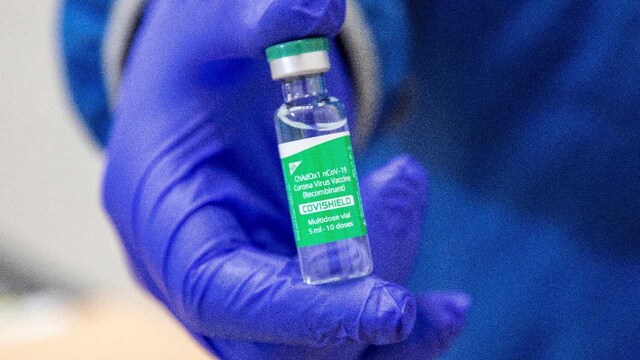As Denmark drops AstraZeneca COVID-19 vaccine, safety of adenovirus vaccines remains unclear
In many cases, studies suggest the clotting was also accompanies by a condition called low levels of blood platelets.

A vial of the AstraZeneca COVID-19 vaccine doses that many nations have secured through a deal with the Serum Institute of India in partnership with Verity Pharma, Wednesday, 3 March 2021, at a facility in Milton, Ontario. Image credit: Carlos Osorio/Pool Photo via AP
This week, Denmark has become the first country to drop the AstraZeneca COVID-19 vaccine from their vaccination program entirely. The news comes after experts found a worrying link between the vaccine and a very rare blood clotting issue. An investigation into the blood clots by Denmark authorities pointed to "real and serious side effects", the country's health agency head had said Wednesday. Denmark isn't the first country to remove the AstraZeneca shot from its vaccination program. With the sheer number of readily-available doses of the vaccine, and limited evidence of why the blood clots might be forming, many countries in the EU and elsewhere have resumed use of the vaccine. This, because the risk of dying from COVID-19
vaccine from their vaccination program entirely. The news comes after experts found a worrying link between the vaccine and a very rare blood clotting issue. An investigation into the blood clots by Denmark authorities pointed to "real and serious side effects", the country's health agency head had said Wednesday. Denmark isn't the first country to remove the AstraZeneca shot from its vaccination program. With the sheer number of readily-available doses of the vaccine, and limited evidence of why the blood clots might be forming, many countries in the EU and elsewhere have resumed use of the vaccine. This, because the risk of dying from COVID-19 was "much greater" than the risk of mortality from its rare side effects.
was "much greater" than the risk of mortality from its rare side effects.
Meanwhile, the dangers posed by the AstraZeneca vaccine remain unclear, and decisions around it, in a state of limbo. So far, investigations have revealed a link between the AstraZeneca shot and a condition known as cerebral venous sinus thrombosis (CVST), in which a blood clot is formed in the brain. A similar observation was made in a few cases of vaccination with the Johnson & Johnson COVID-19 vaccine. With both vaccines, the reports of clotting are very rare. In many cases, studies suggest the clotting was also accompanied by a condition called low levels of blood platelets, called thrombocytopenia.
vaccine. With both vaccines, the reports of clotting are very rare. In many cases, studies suggest the clotting was also accompanied by a condition called low levels of blood platelets, called thrombocytopenia.
The US Centers for Disease Control and Prevention (CDC) committee has expressed plans to review the cases linked to the J&J vaccine, followed by a second analysis by the US Food and Drug Administration (FDA). These US agencies, like their EU counterparts, described the clotting as 'extremely rare'.

Vials of the Oxford-Astrazeneca COVID-19 vaccine. AP
vaccine. AP
Blood clots in the brain and abdomen
As of 4 April, the European Medicines Agency (EMA) has estimated, based on its vaccine side effects monitoring system, that 169 reports of cases of blood clots in vessels exiting the brain, and 53 cases of clotting in blood vessels in the abdomen, from 34 million doses administered in Britain and the EU over the past three months.
There are some indications that age might also be a factor. German vaccination officials recorded 29 cases of blood clots in the brains of women between aged 20 to 59 that received the AstraZeneca vaccine, as per a Reuters report. They said the rate at which blood clots formed in the study group was 20 times higher within 16 days of vaccination, than researchers expected.
Adenovirus vector vaccines
Both the AstraZeneca and J&J vaccines are based on a relatively new technology using adenoviruses. The adenovirus, which cause the common cold, have been modified to essentially render them harmless.
A portion of this "vector", combined with the spike protein from the SARS-CoV-2 virus, is the concept used by many of the adenovirus vaccines in development today, including the Oxford-Astrazeneca and J&J vaccines.
also read

WTO says recovery of global trade in 2021 hinges on widespread COVID-19 vaccination
While the rebound this year will be stronger than expected, WTO's growth forecast states it could slow to 4 percent in 2022.

WHO COVID-19 origins report: Bats or pangolins may have been source of virus in Wuhan
The main takeaway from this report is that more analysis should be conducted in order to get to the bottom of this.

COVID-19 origins still obscure, what are the next steps for WHO's experts?
The group of scientists wants a new inquiry to include biosecurity and biosafety experts to investigate the origins of COVID-19.